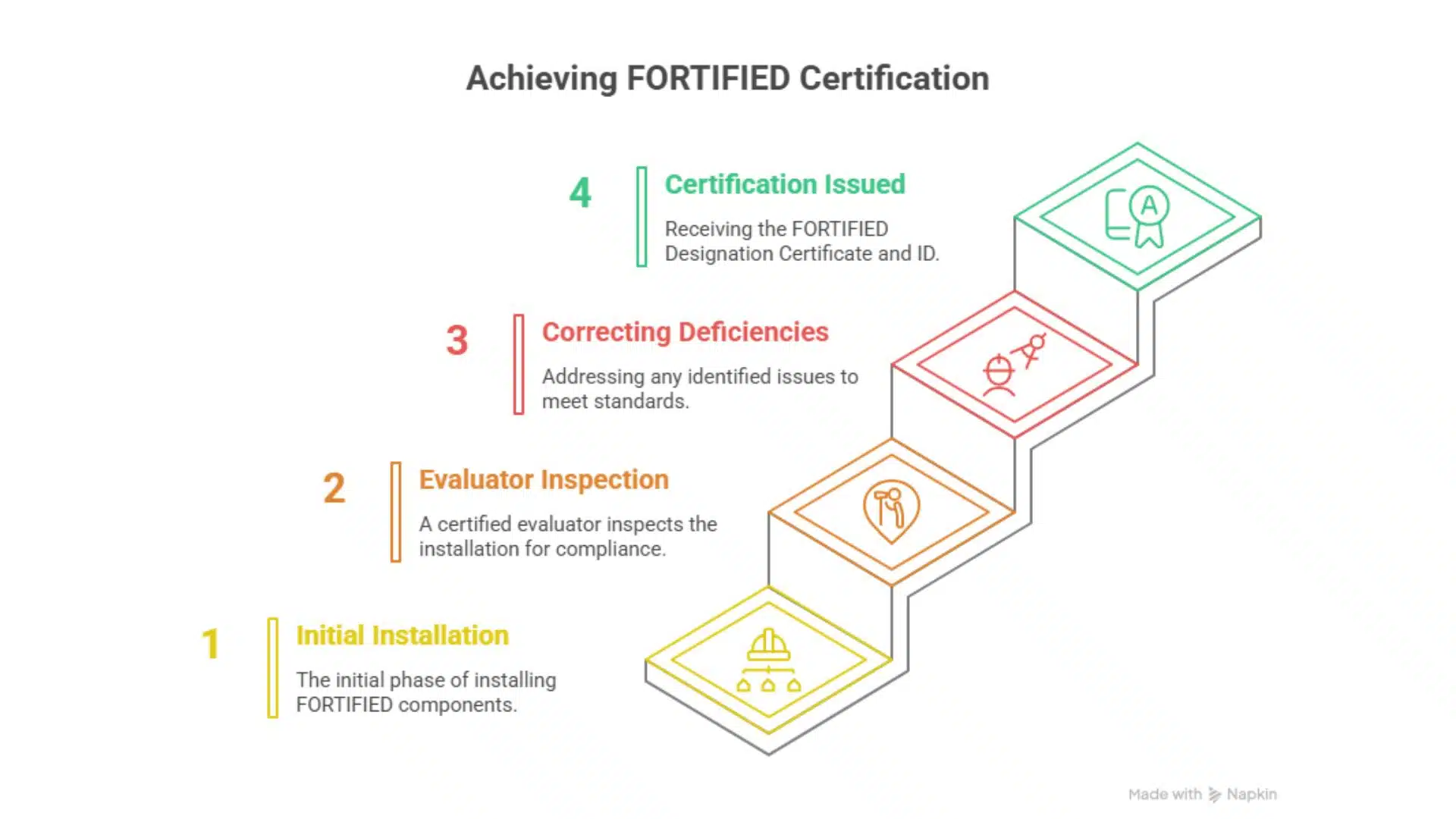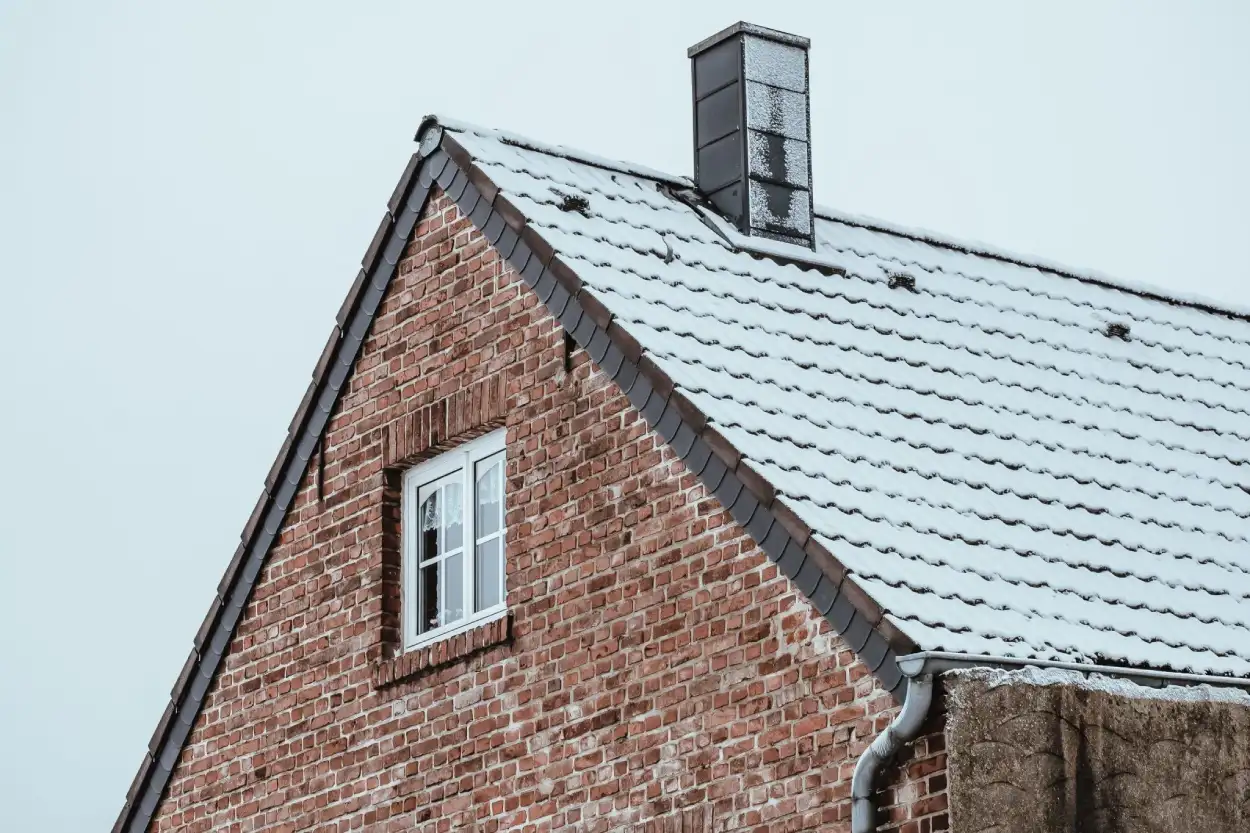Strength You Can Feel, Savings You Can See
Installing a FORTIFIED Roof isn’t just construction—it’s transformation. It’s the difference between patchwork protection and true peace of mind. On the Mississippi Gulf Coast, where hurricanes and high winds aren’t just threats—they’re expected—you need a roofing system designed for resilience.
A FORTIFIED Roof is a nationally recognized standard developed by the Insurance Institute for Business & Home Safety (IBHS) to help homes withstand severe weather. It goes beyond building codes to strengthen key areas of your roof where failure is most likely during high-wind events.
In this guide, we’ll walk you through what to expect during a FORTIFIED Roof Installation
🔹 Planning with a certified evaluator
🔹 Step-by-step installation
🔹 Final inspection and certification
🔹 Insurance discounts and long-term benefits
If you’re searching for a roofer near me or a reliable roofing contractor Gulfport MS homeowners trust, this guide will give you the clarity you need to choose with confidence.
Pre-Installation: Where Resilience Begins
A. Hire a FORTIFIED Evaluator
The FORTIFIED process begins with a certified evaluator—an expert who verifies that your roof meets the IBHS standards throughout every step. Without this professional, your roof cannot earn a FORTIFIED designation or unlock valuable insurance discounts.
B. Roof Inspection
Before any shingles are removed, a full inspection of your existing roof and deck structure is conducted. Contractors look for:
- Rotten or damaged wood
- Weak framing
- Previous installation issues
Addressing these problems early ensures a stable base for your FORTIFIED Roof and prevents future damage—critical in Gulfport MS, where storms can expose vulnerabilities fast.
C. Choosing the Right Contractor
While any contractor can install a FORTIFIED Roof, it’s highly recommended to work with someone who is FORTIFIED-certified. These professionals have completed specialized training and understand how to meet exact IBHS guidelines—right down to the fasteners and flashing techniques.
Installation Day: Step-by-Step Breakdown
A. Tear-Off and Repairs
Your existing roofing materials are removed. Any structural issues discovered during the inspection—such as sagging decking or compromised framing—are repaired to create a clean slate for the FORTIFIED system.
B. Sealed Roof Deck
This is one of the most critical steps. A secondary water barrier—usually a peel-and-stick membrane or a liquid-applied sealant—is installed over the entire deck. It protects your home from leaks, even if the roof covering is torn off during a hurricane.
📍 Crucial for homes on the Mississippi Gulf Coast, where wind-driven rain can devastate interiors.
C. Enhanced Deck Attachment
FORTIFIED requires ring-shank nails, not the standard smooth ones. These are driven into the deck in a tighter pattern, nearly doubling uplift resistance and holding your roof down in high winds.
It’s a small detail with major consequences during a Category 3+ storm.
D. FORTIFIED Accessories & Add-Ons
Your roofer will install upgraded components, such as:
- Reinforced attic vents
- Storm-rated soffits
- Specialized underlayment
These details seal off potential entry points for water and wind—particularly important in coastal areas where even a small opening can lead to major damage.
E. Hail Supplement (Optional)
In areas with frequent hail, like parts of northern Mississippi, homeowners can add a Hail Supplement. This includes shingles rated “Good” or “Excellent” by the IBHS Hail Impact Ratings—offering higher durability than Class 4 options.
F. Flashing & Penetration Sealing
Special care is taken around roof penetrations like:
- Skylights
- Pipe vents
- Valleys
- Chimneys
Proper flashing and sealant applications here are the difference between a stormproof system and a costly leak.

Final Inspection and Certification
A. Inspection by FORTIFIED Evaluator
After installation, your certified evaluator returns to inspect every component. They verify nail patterns, sealed deck coverage, accessory installation, and flashing techniques. If all standards are met, you pass.
Failing areas must be corrected before certification is issued.
B. Receiving Your Certificate
You’ll be issued a FORTIFIED Designation Certificate and a unique ID. This documentation proves that your home meets IBHS’s high standards and qualifies for incentives.
Insurance & Financial Perks
FORTIFIED isn’t just about safety—it’s about savings. Many insurance providers on the MS Gulf Coast offer 10–35% discounts for homes with a certified FORTIFIED Roof.
When storms hit, insurers know FORTIFIED homes suffer far less damage, leading to lower premiums. Integrity Roofing can help you navigate the paperwork so you get what you’re entitled to.
Key Features at a Glance: FORTIFIED vs. Standard Roof
| Feature | Standard Roof | FORTIFIED Roof |
| Roof Deck Sealing | Not required | Required: secondary water barrier |
| Nail Type | Smooth nails | Ring-shank nails, enhanced pattern |
| Roof Accessories | Standard | Reinforced vents, soffits, underlayment |
| Shingle Type | Standard | Impact-resistant (optional) |
| Certification | None | FORTIFIED Designation Certificate |
Make the Strong Choice
A roof is only as strong as the team behind it. At Integrity Roofing, we believe in building smarter—not just stronger. If you’re a homeowner in Gulfport MS or anywhere along the Mississippi Gulf Coast, we’re here to help you weather every storm.
📞 Call (228) 295-8300 or visit roofsbyintegrity.com
📅 Schedule your FORTIFIED Roof evaluation today.
Don’t wait until after the storm—build before it hits.
FAQs: Real Questions from Gulf Coast Homeowners
1. How long does a FORTIFIED Roof installation take?
Depending on the home’s size and condition, a FORTIFIED Roof installation typically takes 2–5 days. This includes removal, repairs, sealing, and final evaluation.
2. Can I get a FORTIFIED Roof with metal roofing?
Yes. FORTIFIED standards apply to both shingle and metal roofs. The key is ensuring the underlayment, attachment methods, and accessories meet IBHS criteria. More info here.
3. Will a FORTIFIED Roof increase my home value?
Absolutely. The designation is nationally recognized, can lower insurance costs, and is a selling point for buyers seeking long-term protection in hurricane-prone areas.
4. Do I need to replace my entire roof to qualify?
Yes. A complete tear-off and replacement are necessary to meet the structural and sealing requirements of the FORTIFIED program.
5. How do I claim my insurance discount after certification?
Provide your FORTIFIED certificate and unique ID to your insurance agent. Most major providers offer discounts for certified homes. Visit FORTIFIED’s insurance FAQ for more details.




